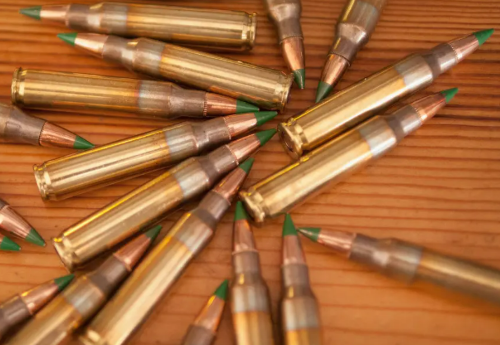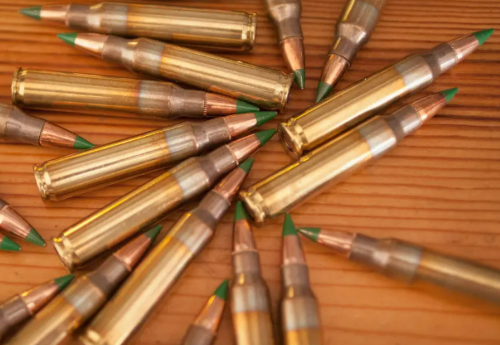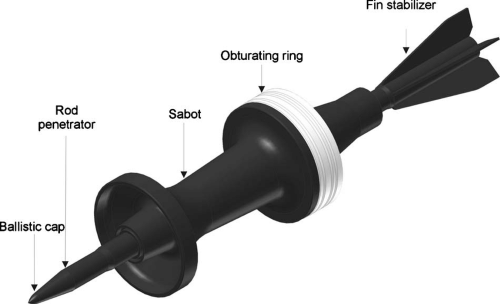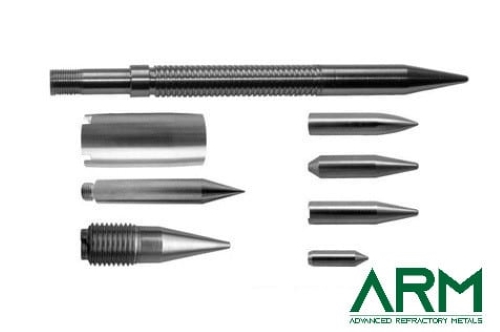Armor-Piercing Weapons: An Overview

1. What Are Armor-Piercing Weapons?
Armor-piercing weapons can penetrate or defeat armored targets. They are typically used against tanks, armored vehicles, and heavily fortified positions. These weapons are often equipped with specialized projectiles that are designed to overcome the protective capabilities of armor by either penetrating it directly or causing it to fail.
The effectiveness of an armor-piercing weapon depends on several factors:
- Projectile Design: The shape, composition, and velocity of the projectile.
- Armor Type: Different types of armor provide varying levels of protection, from reactive armor to composite or ceramic armor.
- Impact Velocity: The speed at which the projectile strikes the target. Higher velocities typically increase the penetration power.
 [1]
[1]
2. Types of Armor-Piercing Ammunition
There are various types of armor-piercing ammunition, each designed to meet specific combat scenarios. Some of the most common include:
- Armor-Piercing Fin-Stabilized Discarding Sabot (APFSDS):
- APFSDS rounds are some of the most advanced and widely used in modern tank warfare. They consist of a high-density, long-rod penetrator made from materials such as tungsten or depleted uranium.
- The round is fired from cannon and uses a sabot to ensure the projectile maintains its high velocity. Upon firing, the sabot is discarded, leaving the penetrator to strike the target with exceptional force.
- High-Explosive Anti-Tank (HEAT) Rounds:
- HEAT rounds are designed to create a focused jet of molten metal that can penetrate even thick armor. The core of the round is typically a shaped charge made from explosives and metal liners, which, when detonated, form a highly focused jet that can penetrate armored vehicles.
- HEAT rounds are effective against a wide range of armored vehicles, including tanks, but their performance may be reduced if the target’s armor is reactive or composite in nature.
- Tungsten and Depleted Uranium (DU) Penetrators:
- Tungsten and DU are often used in armor-piercing rounds due to their density and hardness. These materials allow the projectiles to maintain high velocity and penetrate the toughest armors.
- DU, although effective, has raised environmental concerns due to its toxicity and radioactivity. Tungsten is considered a safer alternative, though it is not as dense as DU.
Further reading: Tungsten Penetrators: The Cutting Edge of Armor-Piercing Technology
- Kinetic Energy Penetrators:
- These rounds rely purely on the kinetic energy from the high speed of the projectile to penetrate armor. Unlike HEAT rounds, which use chemical energy, kinetic energy penetrators, such as APFSDS, deliver immense force upon impact.
Further reading: Common Materials for Kinetic Energy Penetrator
 [2]
[2]
3. Advancements in Armor-Piercing Technologies
As armor technologies continue to evolve, so too do the methods used to defeat them. Some of the latest advancements in armor-piercing technologies include:
- Improved Projectile Materials: Research into new materials, such as advanced tungsten alloys and new formulations of depleted uranium, aims to create even harder and more effective penetrators.
- Enhanced Guidance Systems: Some modern armor-piercing weapons are equipped with guidance systems that help improve accuracy, especially for long-range engagements. These systems may use laser guidance, GPS, or other tracking mechanisms.
- Electromagnetic Railguns: Railguns use electromagnetic force to launch projectiles at extremely high speeds, far surpassing conventional firearms. While still in the experimental phase, railguns promise to offer unmatched penetration capabilities, with projectiles reaching speeds that make them incredibly difficult to stop.
- Hypervelocity Projectiles: Hypervelocity projectiles (HVP) are designed to travel at speeds far exceeding the speed of sound (Mach 5 and beyond). This technology is still being developed but has the potential to revolutionize armor-piercing capabilities.

4. Applications of Armor-Piercing Weapons
Armor-piercing weapons are used in a variety of military applications, including:
- Tank Combat: Tank-on-tank combat often involves the use of armor-piercing rounds, where each side tries to penetrate the other’s armor. Tanks are equipped with specialized cannons designed to fire high-velocity rounds capable of defeating enemy tanks.
- Anti-Aircraft and Anti-Missile Defense: Some anti-aircraft systems use armor-piercing projectiles to disable or destroy incoming missiles or aircraft, particularly those with reactive or hardened armor.
- Naval Warfare: Naval ships employ armor-piercing weapons to destroy other vessels or defend against surface-to-air missiles. Modern naval guns fire both conventional and armor-piercing rounds to defend against various threats.
- Infantry and Anti-Tank Weapons: Soldiers and anti-tank units use smaller, portable armor-piercing weapons, such as rocket-propelled grenades (RPGs) and anti-tank guided missiles (ATGMs), to destroy enemy vehicles, bunkers, and fortifications.
Conclusion
Armor-piercing weapons represent a critical component of modern military technology. From advanced projectiles designed to defeat the toughest armor to the countermeasures developed to stop them, these weapons are at the forefront of battlefield innovations.
With more than two decades of industry experience, Advanced Refractory Metals (ARM) has established itself as a trusted leader in supplying a diverse range of high-performance penetrators. Our extensive expertise and commitment to quality ensure that we deliver products tailored to meet the demanding requirements of modern defense and military applications. Send us an inquiry if you are interested.
Reference:
[1] The Editor (2015, March 7). Protect the Police From Armor-Piercing Bullets. The New York Times. Retrieved January 8, 2025, from https://www.nytimes.com/2015/03/08/opinion/sunday/protect-the-police-from-armor-piercing-bullets.html
[2] Magier, Mariusz. (2010). The Conception of the Segmented Kinetic Energy Penetrators for Tank Guns. Journal of Applied Mechanics. 77. 10.1115/1.4001714.
{{item.content}}
LEVE A REPLY
{{item.children[0].content}}
{{item.content}}






